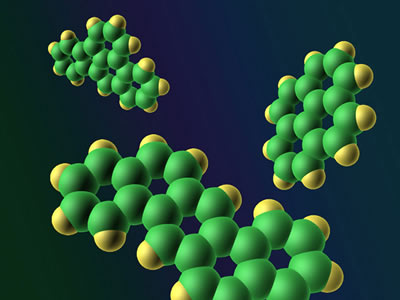Dioxin: Burning 1 kilogram of wood produced as much as 160 micrograms of total dioxins.
PCBs (polychlorinated biphenyls) Emissions from residential fireplace and woodstove appliances burning fuels available from the San Francisco Bay area were sampled for polychlorinated dibenzodioxins and dibenzofurans (PCDDs/Fs), polychlorinated biphenyls (PCBs), hexachlorobenzene (HxCBz), particulate matter (PM), polycyclic aromatic hydrocarbons (PAHs), oxygenated PAHs, and the monosaccharide levoglucosan. A total of 32 PAH compounds, ranging in concentration from 0.06 to 7 mg/kg, amounted to between 0.12 and 0.38% of the PM mass, depending on the wood and facility type.[Gullett, B. K.; Touati, A.; Hays, M. D., PCDD/F, PCB, HxCBz, PAH, and PM Emission Factors for Fireplace and Woodstove Combustion in the San Francisco Bay Region, Environ. Sci. Technol.; (Article); 2003; 37(9); 1758-1765.]
Lead: produced from burning 2.2 pounds of wood = 0.1mg to 3 mg.
Formaldehyde Thad Godish, Ph.D, Department of Natural Resources, Ball State University.
In a laboratory at Louisiana State University, researchers found that the free radicals produced from wood smoke are chemically active 40 times longer than those produced from cigarette smoke, so that once inhaled they will attack the bodies cells longer. William Pryor, "Biological effects of cigarette smoke, wood smoke, and the smoke from plastics: the use of electron spin resonance" Free Radical Biology and Medicine, Vol.13:6(659-676)
Radioactive Cesium "With the exception of some very low California readings, all measurements of wood ash with fallout cesium exceeded - some by 100 times or more - the levels of radioactive cesium that may be released from nuclear plants (about 100 picocuries per kilogram of sludge). Wood ash cesium levels were especially high in the Northeast." [Science News, 1991] See also RACHEL'S HAZARDOUS WASTE NEWS #282.
Carcinogens Polycyclic Aromatic Hydrocarbons (PAH): Residential wood burning is the source of 50% of airborne Polynuclear Organic Material (POM) in the U.S. POM contain a group of compounds (PAH) which include many Class A carcinogens, the most carcinogenic materials known to exist. Air pollution measurements in a residential neighborhood on Christmas Day (the most wood smoke polluted day) showed early morning background levels of PAH of 20 ng/m3. The level increased as wood burning began, peaking at over 2000 ng/m3. The U.S. EPA estimates that the cancer risk from wood smoke is twelve times greater than from equal amounts of tobacco smoke. Below is a NASA picture of PAH.

"More and more, cancer looks like an environmental disease." Ana Soto, Tufts University, Professor of Cell Biology. "Human evidence is particularly strong for PCBs and polycyclic aromatic hydrocarbons (PAHs)". Los Angeles Times, May 14, 2007 Common chemicals are linked to breast cancer.
Wood burning also creates cyanide.
Toxic Brain Encephalopathy or "Brain Fog" and ADA also see Kleinman: brain inflammation
Fungus and Mold.page
Wood Smoke Chemicals Health Effects Table
Swedish Report finds antioxidants in birch wood smoke. This is one of the only studies that has found a beneficial effect in wood smoke. We seriously doubt that it is a net gain.
Uncombusted Wood: Sawdust is a Class A Carcinogen. Triph Fungal Infection in a Wood Worker: (uncombusted wood particles.)
